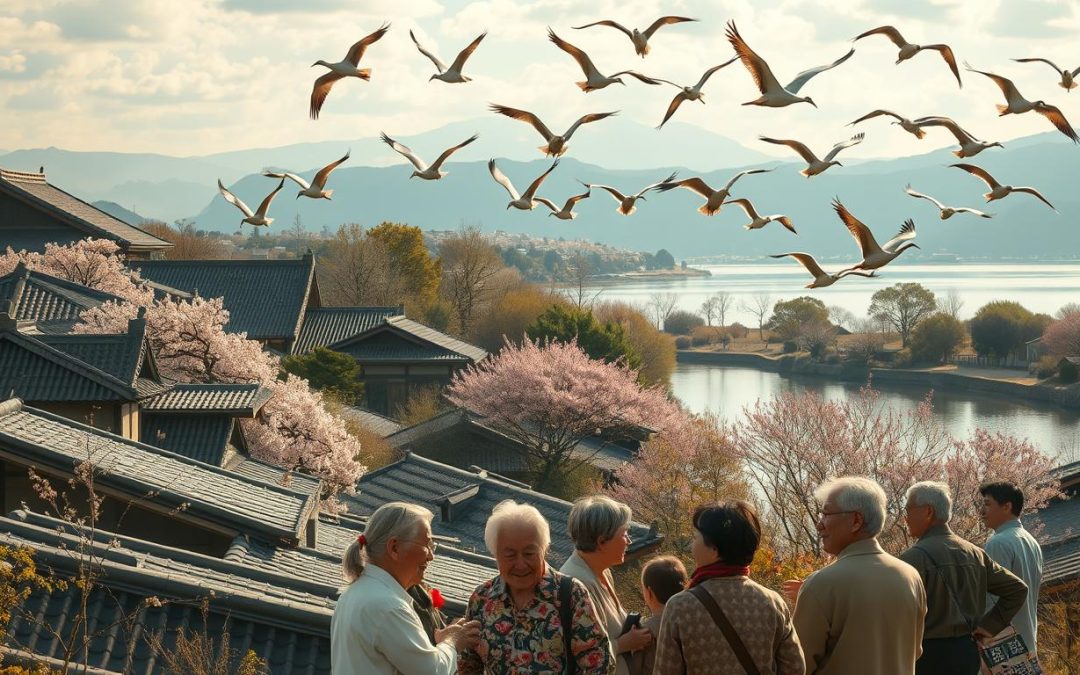Have you ever wondered how a single country can unite so many voices under one cultural umbrella? In Japan, the answer lies in its rich linguistic diversity. While Japanese is the primary mode of communication, the country is home to a variety of dialects and minority languages that reflect its complex history.
Standard Japanese, based on the Tokyo dialect, serves as the common thread. However, regional dialects add unique flavors to everyday conversations. These variations are influenced by historical events, from ancient times to modern eras.
Foreign influences, such as Chinese characters and European languages, have also shaped the Japanese language. This blend of indigenous and imported elements makes it a fascinating subject for study. Whether you’re a student or a curious traveler, understanding this linguistic tapestry offers a deeper appreciation of the country’s culture.
Key Takeaways
- Japanese is the dominant language, but regional dialects are widely spoken.
- Standard Japanese is based on the Tokyo dialect.
- Historical events have shaped the country’s linguistic diversity.
- Foreign influences, like Chinese characters, enrich the language.
- Language plays a key role in shaping culture and education.
Language History and Cultural Impact in Japan
The story of a country’s language is a journey through time and influence. From ancient scripts to modern dialects, every word carries the weight of centuries. This section explores how historical events and foreign contacts shaped the language spoken today.

Ancient and Medieval Language Developments
Early records of the language were written using Chinese characters. These symbols, known as Kanji, became the foundation of written communication. Over time, two phonetic scripts—Hiragana and Katakana—emerged, simplifying the writing process.
During the medieval period, regional dialects began to flourish. Each area developed its own unique way of speaking, influenced by geography and culture. This diversity laid the groundwork for the rich linguistic tapestry seen today.
Foreign Influences Shaping the Language
Foreign interactions introduced new vocabulary and ideas. Portuguese and Dutch traders brought words like “pan” (bread) and “biiru” (beer). Later, English became a significant influence, especially during the Meiji period.
These foreign elements enriched the language, blending seamlessly with native words. Today, you’ll find traces of these influences in everyday conversations.
| Period | Key Development | Impact |
|---|---|---|
| Ancient | Adoption of Chinese characters | Foundation of written language |
| Medieval | Creation of Hiragana and Katakana | Simplified writing system |
| Meiji Era | Introduction of English vocabulary | Modernization of language |
The cultural impact of these changes is profound. Literature, education, and social interaction were transformed, creating a dynamic and evolving language system. Understanding this history offers a deeper appreciation of the words we use today.
Japan: Official and widely spoken languages
Languages are more than just words; they’re a reflection of history and identity. In this part of the world, the linguistic landscape is shaped by two main families: Japonic and Ainu. Each plays a unique role in the culture and communication of the people.

Defining Japan’s Linguistic Landscape
The Japonic family is the dominant language group, encompassing Standard Japanese and the Ryukyuan languages. Standard Japanese, based on the Tokyo dialect, is the primary form of communication. It’s used in education, media, and formal settings.
Regional dialects add richness to the language spoken here. For example, the Kansai dialect is distinct from the Tokyo form. These variations highlight the diversity within the Japonic family.
Exploring the Japonic and Ainu Language Families
The Japonic family includes Japanese and Ryukyuan languages. While they share similarities, they’re not mutually intelligible. Ryukyuan languages, spoken in Okinawa, are classified as endangered by UNESCO.
In contrast, the Ainu languages are unrelated to Japonic. They’re critically endangered, with only a handful of elderly speakers remaining. Efforts are underway to preserve this unique part of the linguistic heritage.
Language policies and education have played a key role in shaping public communication. While Standard Japanese is widely used, there’s a growing emphasis on preserving traditional languages. This balance ensures that both history and modernity are honored.
Modern Linguistic Diversity and Regional Dialects
Language is a living, breathing part of any culture, constantly evolving with time. In this part of the world, Standard Japanese serves as the backbone of communication. Yet, regional dialects add unique flavors to everyday conversations. These variations reflect the rich history and geography of different areas.

Standard Japanese and Regional Variations
Standard Japanese, based on the Tokyo dialect, is the primary form of communication. It’s used in education, media, and formal settings. However, regional dialects like Kansai, Tohoku, and Kyushu showcase the diversity within the language family.
For example, the Kansai dialect is known for its distinct intonation and vocabulary. In contrast, the Tohoku dialect is softer and slower. These differences highlight how geography shapes the way a person speaks.
“Every dialect tells a story of its region, preserving traditions and history.”
Preservation Efforts for Endangered Languages
While Standard Japanese dominates, indigenous languages like Ainu and Ryukyuan face extinction. The Ainu language, for instance, has only about 10 native speakers left. Efforts to preserve these languages include educational programs and cultural projects.
For example, UNESCO has classified Ryukyuan languages as endangered. Local initiatives aim to teach these languages to younger generations. This ensures that the spoken language of these communities survives.
| Language | Status | Preservation Efforts |
|---|---|---|
| Ainu | Critically Endangered | Educational programs, cultural projects |
| Ryukyuan | Endangered | UNESCO initiatives, local teaching |
These efforts highlight the importance of preserving linguistic diversity. Whether it’s a foreign language or a regional dialect, every voice matters.
Conclusion
Understanding a nation’s linguistic heritage reveals its cultural depth and historical evolution. In this part of the world, the Japonic family dominates, with Standard Japanese serving as the primary form of communication. Regional dialects add unique flavors, reflecting local traditions and geography.
Efforts to preserve endangered languages, like Ainu, are crucial. These initiatives ensure that linguistic diversity remains a vibrant part of the culture. In regions such as Hokkaido, these efforts are particularly significant.
Today, the blend of historical influences and modern usage shapes the way people communicate. This dynamic mix highlights the importance of language in understanding a nation’s identity. By valuing and preserving these linguistic treasures, we honor the rich tapestry of human expression.
The above is subject to change.
Check back often to TRAVEL.COM for the latest travel tips and deals.
Here are some Tours & Sightseeing suggestions that might pique your interests!
